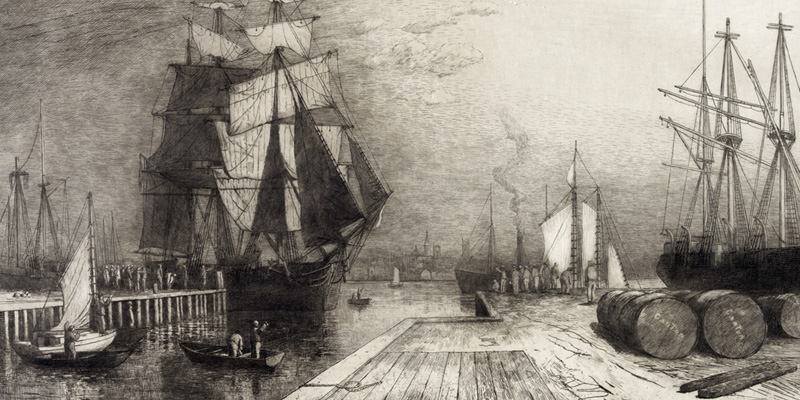Immigrants bring their alcohol with them. It’s how Napa got started. It’s how we Americans got our hands on vodka. It’s also how we learned about aquavit. This Scandinavian liqueur is itself a kind of immigrant, traveling around the world and improving through the wear and tear of rejection and acceptance.
Our story begins when Americans first learned of this herbal liqueur, about 110 years ago. Times were changing fast for America in 1907. The country was trying to become a world superpower in the Western Hemisphere. Teddy Roosevelt was leading the U.S.’s 75 million souls with his Big Stick diplomacy. Meanwhile, more immigrants were arriving on America’s shores than ever before, even while the Immigration Act of 1907 tried to keep non-European immigrants out.
One anonymous writer had a unique take on the immigration crisis. “Foreign tastes imported,” blazed a headline on Feb. 13, 1907 in Oregon’s The Morning Astorian. To wit: “Immigrants bring with them the desire for the liquors of their Fatherlands and their tastes are catered to.” The 20th-century barkeep “must not only be an expert analytical chemist, but also an accomplished anthropologist,” for the “flood” of immigrants “has brought with it in the way of flotsam and jetsam a host of strange liquors, with weird names and subtle effects.” According to this curious yet suspicious writer, America’s newly diverse population was no longer content with the tried and true drinks of yore like whiskey, rum, and cider. People were now demanding saké, mastica, and arrack. And they were requesting a drink that, as he put it, “next to Santa Cruz rum, is about the strongest liquor made.” He was speaking of aquavit.
Aquavit, a “brandy, kept on sale by all saloons that enter the Norwegian trade,” was in 1907 distilled in Norway from imported American corn, Russian wheat, and Norwegian potatoes. Linie Aquavit, which was most likely the aquavit the writer saw most often, sold for $1.35 a bottle. That was about the same price as a bottle of Irish or Scotch whiskey, and the equivalent of around $25 in 2016. But unlike whiskey, each bottle of Linie had already traveled around the world by ship in sherry casks even before the journey to the U.S. began.
It all started in 1805 with a trading manager named Heinrich Meincke and a ship called Trondhjems Prøve, or so the story goes. The ship was chartered to travel halfway across the world to what is now Indonesia, carrying ham, fish, and cheese, plus five casks of Norwegian aqua vita, the Scandinavian spirit that had proven popular since the 15th century. It was a long journey, and the Prøve crossed the equator on its way. But when it arrived, the captain found that people in that part of the world didn’t care for the cold-weather spirit. Why would the Dutch colonial rulers want Norwegian liquor, after all, when they could make their own genever or sip on rum under the coconut trees and hot equatorial sun?
Rejected by the land they had hoped to call home, the barrels stayed on board the ship as the Prøve traveled home, crossing the equator once again. The oak barrels filled with aqua vita had been on deck soaking in the sun and the salt air for two years before finally returning back to port at Trondheim, Norway. But to everyone’s surprise, when the barrels were unloaded, the stolid liquor had survived it all. To the surprise of those who tasted it, it was rather improved.
By the 1830s, Norway’s shipping routes had expanded. Businesses in the country routinely shipped dried cod to South American markets. On those ships, barrels of aqua vita, shortened to aquavit, stayed with the crew as they crossed the equator once on the way there, and then once again on the way back — hence “Linie,” named for how it crossed the equatorial line.
Our 1907 writer was blissfully unaware of the arduous journey each bottle of aquavit had endured. But just 13 years after he complained of the glut of new styles of alcohol that immigrants popularized, the U.S. would outlaw all alcohol during the period known as Prohibition. New editorials would be written in New York newspapers defending aquavit as not only a valuable remedy against influenza, but “the best remedy.”
To this day, producers and enthusiasts swear that putting the liquor through the trials of the environment mellows out the flavor of aquavit. Whether or not this is actually true, this vigorous, herbaceous liqueur has firmly taken root on American soil, and continues to come to us at the end of its long travels and travails as it crosses the globe, and for that, we are grateful.

